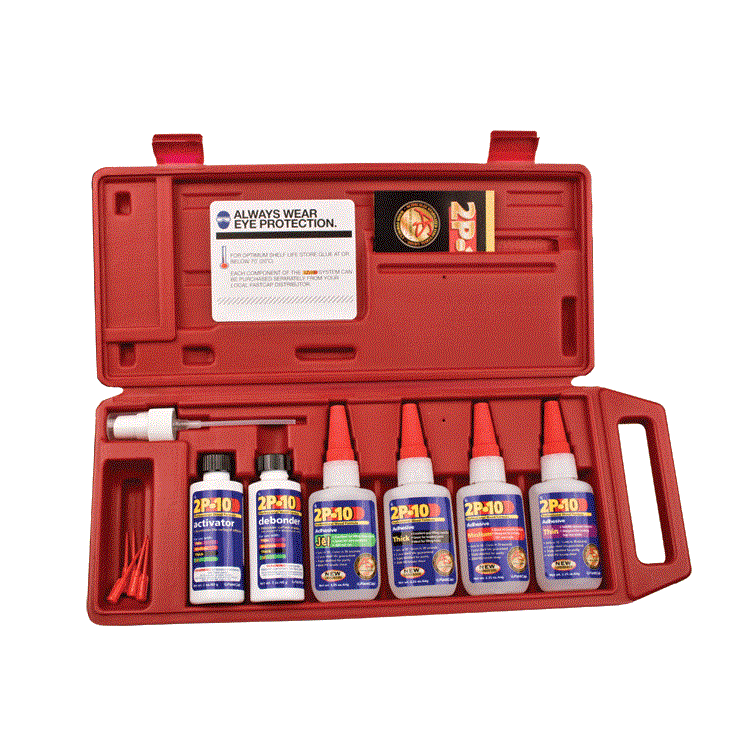Many woodworkers have a secret weapon in their workshop. It’s not a fancy machine or an heirloom hand plane. It is in fact a small bottle of a chemical called ethyl 2-cyanoacrylate – better known to most people as ‘CA glue’ or ‘Super Glue’. And that latter name is pretty accurate. CA glue does more jobs, and quicker than any other common adhesive. A bottle, or three, of CA glue will be found in almost every woodworker’s workshop.
What is CA glue?
Cyanoacrylate was originally discovered by American scientists during WW2 while investigating materials for plastic gun sights. It was unsuitable for that task; but its superb bonding properties were noted at the time by scientist Harry Coover. He returned to the chemical in the post-war years, developing it as an industrial and household adhesive.
Fast-forward to the USA’s war in Vietnam: enterprising field medics had started using CA glue as a way to temporarily close wounds until the patient could be treated with conventional stitches and dressings. This sounds surprising, but if you’ve ever had an accident with CA glue, you’ll know how ferociously it sticks to skin, and how fast it dries! This is due to the moisture on your skin accelerating the curing reaction. If you’re thinking of using your workshop CA as a makeshift band-aid next time you catch the corner of a sharp chisel, make sure you close the wound tightly before applying the glue across it, and hold it closed while the glue dries. (Please note though – your bottle is not sterile, and CA glue can cause skin irritation, so perhaps it’s best left as a last resort).

The hero of our story: Ethyl Cyanoacrylate
How does CA glue work?
As an adhesive, CA glue can be used on almost any material and is characterised by a rapid cure time, which can be sped up even more with the use of ‘kicker’ or accelerator – a chemical that will cause almost instantaneous hardening. In most situations this can eliminate the need for clamps. One technique is to apply the glue to one gluing surface, and the accelerator to the other, so that the glue dries as soon as the surfaces make contact. This doesn’t leave any room for positioning error!
The primary formulation of CA is a very thin, watery consistency. This is excellent for wicking into cracks when repairing small items. However, thicker viscosities are also available; the thickest versions are gels that will stay put on vertical surfaces, while the intermediate viscosities run and drip more like traditional glues.
What is CA glue used for?
All viscosities dry to a clear, brittle plastic that has great gap-filling and surfacing properties. Indeed, it is often used as a finish repair, a levelling surface preparation, or even as a finish in itself. Pen turners in particular are known for using CA glue as a finish – it is applied in multiple thin layers while tuning, and then levelled and buffed. Used in this manner, a high gloss is possible. We’ve found, however, that using CA in large quantities (as is necessary for pore-filling and finishing) will give off a lot of nasty fumes, so good ventilation is a must.
Pro tip: a few drops of CA glue between to strips of masking tape with their sticky sides placed outwards creates a double-sided tape that stays put but comes off with no residue – perfect for template work.

At Timbecon, we’re lucky enough to stock our favourite CA glue system: 2P-10 by US company FastCap. It’s available in four viscosities and also comes in a ‘rubber-toughened’ version that reduces the brittleness of the cured film, increasing the adhesive bond in stressed joints. Accelerator is available, as well as a debonder (which can be very, very handy…don’t ask us how we know that!).
Perhaps our favourite part of the 2P-10 system is its pigments. These are not ordinary coloured powders; they’ve been specially formulated to be unreactive with the CA in order to prevent premature curing. Mix the pigment with the glue at any viscosity, and you have a fast-drying fill for creative inlay effects, knothole filling, ding repair, and so on. Simply pack the fill into the gap, hit it with the accelerator (or just wait a few minutes) and then it can be easily sanded or scraped level.
There are plenty more uses for CA glue that we haven’t mentioned (and uses we haven’t even heard of!). One thing is for sure. Once you start using CA glue in your workshop, you’ll wonder how you ever survived without it!

Shop CA Glue Now!